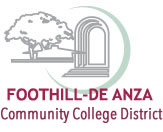Litigation Victory Clears Way for Measure C Bond Program
The California Supreme Court has cleared the way for the Foothill-De Anza Community College District to move forward with its $490.8 million Measure C bond, which was approved by 65.69 percent of the district's voters in June 2006.
The Supreme Court on Wednesday declined to review an appellate court ruling holding that the district complied with all legal requirements for Measure C. There is no avenue for further appeal.
"The Board of Trustees and the entire campus community are thrilled that we can finally move ahead to renovate our aging facilities and construct the science and technology buildings that are so important to the education of students in our community," said board President Bruce Swenson. "We are pleased that the California Supreme Court clearly and definitively affirmed the standards for accountability and oversight of these bonds, which received strong support from our local residents.''
The Supreme Court action leaves the decision by the 6th District Court of Appeal fully intact and its published opinion remains binding on all trial courts in the state. This means that other California school and community college districts and county offices of education may rely upon that decision, which could short-circuit legal challenges to bond measures under Proposition 39. That state proposition, approved in 2000, lowered the voter-approval threshold from two-thirds to 55 percent for bond measures that meet certain accountability requirements.
"The appellate decision obtained by Foothill-De Anza will now benefit all California school districts,'' said John Shupe, an attorney for the district and a number of other school systems. "Trial courts will now be able to dispose of meritless claims without protracted litigation, thus reducing a litigant's leverage to force a monetary settlement. The public benefit achieved is enormous.''
Sean Absher of Stradling Yocca Carlson & Rauth represented the district as the lead litigation attorney.
"As more California districts turn to Proposition 39 to meet their critical facility needs, this decision is of great significance because it clarifies for the first time the "project list" requirements under Proposition 39,'' Absher said. "It makes clear the project list should be broadly interpreted to give districts flexibility in meeting their facility needs as they evolve.''
Every judge who has reviewed the case has concluded that Foothill-De Anza has complied with all legal requirements for Measure C.
Expecting a legal challenge to the bond measure, the district moved quickly to initiate a validation action shortly after Measure C passed. Aaron Katz and Melvin Emerich responded, raising various challenges to Measure C.
During the litigation, the district developed a plan to move forward prudently, selling $250 million in bonds without financial penalty and putting all but $10 million of the money in escrow. The interest on the escrow account has largely offset the escalated construction costs. As the district waited for the case's resolution, it began planning for bond projects so it would be ready to go when the legal hurdles were cleared.
The bond money will enable the district to modernize and maintain its campuses, improve safety and fund critical equipment and technology needs.
In accordance with Proposition 39 requirements, the board of trustees has appointed a citizens' bond oversight committee, which recently issued its first annual report. "Measure C bond expenditures have been properly made and only for projects identified in the bond measure,'' the oversight committee concluded.
For more information about the committee and Measure C, please visit the Measure C bond website at www.measurec.fhda.edu
Timeline of case
June 6, 2006: Foothill-De Anza voters approve a $490.8 million bond measure with 65.69 percent of the vote.
June 7, 2006: Foothill-De Anza files a validation complaint, "Foothill-De Anza Community College District vs. All Persons Interested." Two respondents, Melvin Emerich and Aaron Katz, filed an answer raising challenges to Measure C.
December 2006: After trial in November, Santa Clara County Superior Court Judge Randall C. Schneider enters judgment validating the position of the district and Measure C.
December 2007: After a November hearing, the 6th District Court of Appeal finds for the district by affirming the validity of Measure C, issuing a published opinion.
March 2008: The California Supreme Court denies a petition to review the case by Mr. Emerich, leaving the appellate court's published opinion binding on all trial courts in the state.
